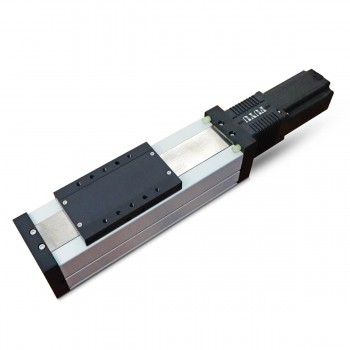1. Basic introduction to permanent magnet stepper motors
Permanent magnet stepper motors are devices that convert electrical energy into mechanical energy. Their core feature is that the rotor uses permanent magnets, which can generate a magnetic field with alternating polarity in the air gap. When the stator winding is energized, the rotor will align with the direction of the magnetic field determined by the phase winding. When the winding is switched, the rotor will rotate a specific angle to achieve stepping motion.
2. Working principle of permanent magnet stepper motors
The working principle of permanent magnet stepper motors is based on the principle of electromagnetism. Its internal structure includes a fixed part (stator) and a movable part (rotor). The stator has a gear-like protrusion with a coil wound on it, and the rotor is a permanent magnet. When the stator phase is energized, the current passing through the coil generates a magnetic field, and the rotor will align with the magnetic field. By applying voltage to different phases in turn, the rotor will rotate a specific angle and eventually reach the required position.
3. Structural advantages of permanent magnet stepper motors
1. High efficiency: One of the biggest advantages of permanent magnet stepper motors is their high efficiency. Because it uses high-performance permanent magnetic materials, it does not require an external power supply to provide a magnetic field, which reduces energy loss, so the efficiency can reach more than 90%, which is significantly higher than traditional motors.
2. Excellent power density: Permanent magnet stepper motors have higher output power at the same volume and weight. This feature makes it particularly outstanding in application environments with limited space, such as electric vehicles, robots, and portable devices. High power density not only improves the performance of the equipment, but also helps to reduce the weight of the equipment, which is conducive to the portability and flexibility of the product.
3. Wide operating range: Permanent magnet stepper motors have a wide operating range and can work stably under various working conditions. Because its starting and running torque is relatively constant, it can still maintain good performance even at low speeds and high loads. This is particularly important in application scenarios that require frequent starting and stopping, such as elevators, lifts, etc.
4. Low maintenance cost: Compared with traditional motors, permanent magnet stepper motors have less mechanical wear. Its brushless design eliminates the wear and replacement of carbon brushes, greatly reducing maintenance costs. This low maintenance requirement enables permanent magnet stepper motors to maintain high reliability in long-term operation and reduce downtime.
5. High precision and repeatability: Permanent magnet linear stepper motors can achieve high-precision linear motion through precise linear motion control technology and efficient drive algorithms. Feedback systems such as grating scales or encoders provide real-time position information to the motor, and the drive algorithm adjusts the current and voltage based on this information to ensure the accuracy of the stepping action.
4. Common applications of permanent magnet stepper motors
1. Industrial automation and control: In CNC machine tools (CNC), permanent magnet stepper motors are used to drive the X, Y, and Z axes of lathes, milling machines, and engraving machines for precise linear or rotational motion, and control tool position and feed speed. In addition, they are also used in 3D printers to accurately control the movement of the print head and platform to achieve layer-by-layer material stacking.
2. Medical and laboratory equipment: In the medical field, permanent magnet stepper motors are used to control the rotation and positioning of the scanning head of CT/X-ray machines, adjust the precise position of certain components in nuclear magnetic resonance, and control the propulsion speed and distance of the piston in the infusion pump/syringe pump to achieve trace and uniform delivery of liquid medicine. In laboratory equipment, they are also used in DNA sequencers and automated sample processors to accurately move the position of sample trays and detection probes.
3. Office automation equipment: In printers, scanners, copiers and fax machines, permanent magnet stepper motors are used to control the precise movement of print heads, scanning heads and paper
1. In addition, they are also used in plotters to accurately control the movement of drawing pens or knives and draw fine graphics.
4. Consumer electronics and household appliances: In cameras, smart door locks and air conditioners, permanent magnet stepper motors are used to control the translation, pitch and rotation of cameras, the electronic unlocking of smart door locks, and the swing of air guide plates of air conditioners.
5. Other applications: Permanent magnet stepper motors are also used in stage lighting to control the angle and zoom of spotlights, as well as in instrumentation and control to rotate car dashboard pointers and adjust valve openings.
Source:https://plaza.rakuten.co.jp/yixing/diary/202506250000/















